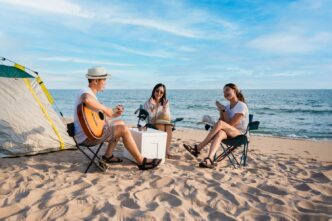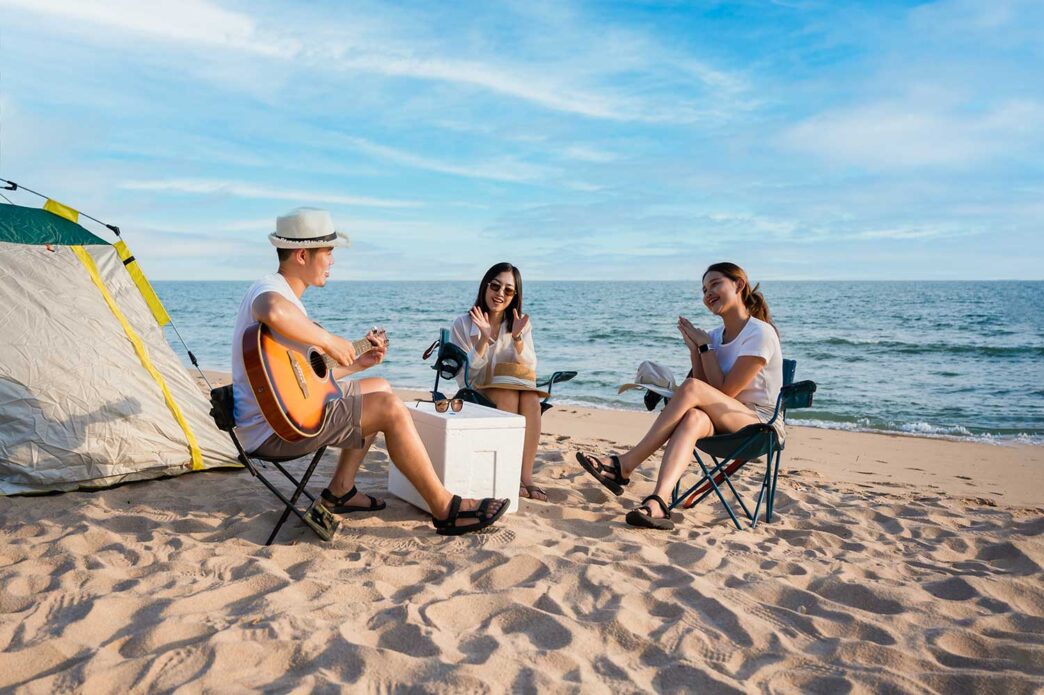It is allowed, but highly regulated
March and April are peak seasons in Los Cabos, not only because of spring break but also due to Holy Week in Mexico, during which students are on vacation and families gather for holidays.
For many travelers, camping on the beaches of Baja California Sur is one of the best ways to enjoy nature. But is camping allowed on any beach?
Camping on the beaches of Baja California Sur offers a unique experience, allowing visitors to connect with nature and enjoy breathtaking landscapes. However, it is essential to camp responsibly and follow established regulations.
Respecting the environment not only helps avoid fines or sanctions but also ensures these spaces remain in optimal condition for future generations.
The right to access beaches in Mexico is guaranteed by the General Law of National Assets, meaning that anyone can enjoy these spaces. However, setting up camps is not permitted on all beaches, and those where it is allowed have specific regulations.
To avoid problems with authorities and contribute to environmental conservation, it is important to understand the rules governing this activity, the necessary precautions to take, and the potential penalties for non-compliance.
For example, the Official Mexican Standard NOM-06-TUR-2017 establishes the minimum requirements for camps, including both permanent sites and designated natural camping areas. This regulation mandates the availability of adequate sanitary facilities, designates permitted camping zones, and outlines security measures to protect both tourists and the environment. Failure to comply with these regulations may result in financial penalties or even expulsion from the area.
In protected natural areas, such as Isla Espíritu Santo there are special rules. Access is controlled by CONANP (National Commission of Protected Natural Areas). Visitors must acquire an access bracelet to camp on its beaches.
This permit certifies that the visitor has been informed of conservation regulations and helps authorities regulate the number of people entering the area.
As of January 1, 2025, the cost of the access bracelet is 215 pesos per person. However, children under 12 and older adults are exempt from this fee.
Authorities have established strict penalties for those who harm coastal ecosystems. According to the General Law of Ecological Balance and Environmental Protection, anyone caught polluting a beach may face fines of up to 3.7 million pesos (approximately $185,000 USD), depending on the severity of the infraction.
In severe cases, authorities may impose administrative arrests of up to 36 hours or ban access to protected beaches.
Beyond administrative sanctions, some actions are considered environmental crimes and can result in prison sentences. For example:
- Destruction of mangroves, coral reefs, or coastal dunes: Up to 10 years in prison.
- Dumping oils, plastics, or chemicals into the sea: Up to 9 years in prison and significant fines.
- Illegal capture of protected species (e.g., sea turtles, sharks): Up to 9 years in prison.
- Unauthorized construction within the federal maritime-terrestrial zone: Up to 6 years in prison
- Starting a bonfire in a protected area without authorization: If it causes a dangerous fire, it may be punishable by up to 12 years in prison.
In areas like Isla Espíritu Santo, where any environmental disruption is considered high impact, authorities strictly enforce these penalties.
The National Commission of Protected Natural Areas (CONANP) has issued recommendations for those wishing to camp in protected spaces, ensuring both visitor safety and ecosystem preservation.
Key Considerations Before Camping:
- Understand the Regulations – Each protected natural area has different rules regarding permitted camping locations and activities.
- Bring Appropriate Equipment – Prepare for weather and terrain conditions to ensure a safe and comfortable experience.
- Follow “Leave No Trace” Principles – Minimize human impact by avoiding the collection of plants, stones, or other natural elements and ensuring no trash is left behind.
- Prioritize safety by carrying a first aid kit and having basic emergency care knowledge and inform family or friends about your itinerary and expected return date in case of emergencies.
By following these guidelines, campers can enjoy the stunning landscapes of Baja California Sur while respecting and preserving its natural beauty for future generations.




Sorry.
Too many bandit’s